Tomas Zemcik
Multi-Unit Floor Plan Recognition and Reconstruction Using Improved Semantic Segmentation of Raster-Wise Floor Plans
Aug 02, 2024



Abstract:Digital twins have a major potential to form a significant part of urban management in emergency planning, as they allow more efficient designing of the escape routes, better orientation in exceptional situations, and faster rescue intervention. Nevertheless, creating the twins still remains a largely manual effort, due to a lack of 3D-representations, which are available only in limited amounts for some new buildings. Thus, in this paper we aim to synthesize 3D information from commonly available 2D architectural floor plans. We propose two novel pixel-wise segmentation methods based on the MDA-Unet and MACU-Net architectures with improved skip connections, an attention mechanism, and a training objective together with a reconstruction part of the pipeline, which vectorizes the segmented plans to create a 3D model. The proposed methods are compared with two other state-of-the-art techniques and several benchmark datasets. On the commonly used CubiCasa benchmark dataset, our methods have achieved the mean F1 score of 0.86 over five examined classes, outperforming the other pixel-wise approaches tested. We have also made our code publicly available to support research in the field.
Varroa destructor detection on honey bees using hyperspectral imagery
Mar 21, 2024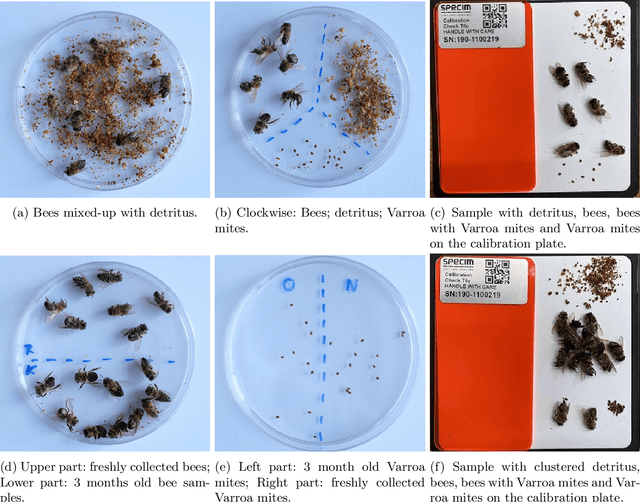
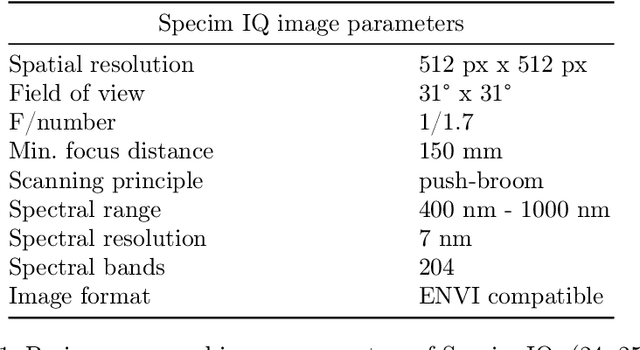
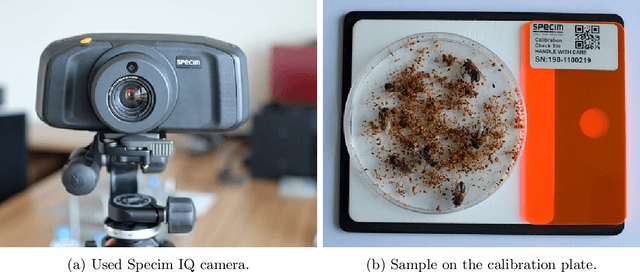
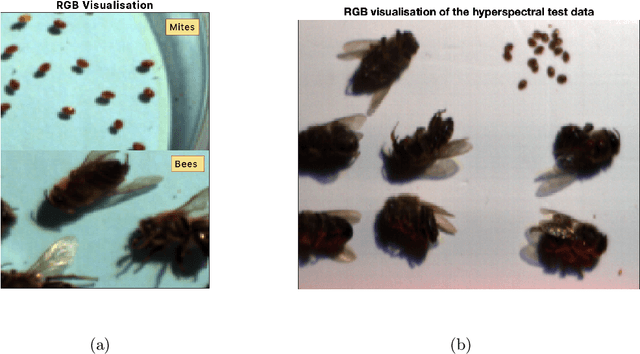
Abstract:Hyperspectral (HS) imagery in agriculture is becoming increasingly common. These images have the advantage of higher spectral resolution. Advanced spectral processing techniques are required to unlock the information potential in these HS images. The present paper introduces a method rooted in multivariate statistics designed to detect parasitic Varroa destructor mites on the body of western honey bee Apis mellifera, enabling easier and continuous monitoring of the bee hives. The methodology explores unsupervised (K-means++) and recently developed supervised (Kernel Flows - Partial Least-Squares, KF-PLS) methods for parasitic identification. Additionally, in light of the emergence of custom-band multispectral cameras, the present research outlines a strategy for identifying the specific wavelengths necessary for effective bee-mite separation, suitable for implementation in a custom-band camera. Illustrated with a real-case dataset, our findings demonstrate that as few as four spectral bands are sufficient for accurate parasite identification.
Machine Learning and Computer Vision Techniques in Bee Monitoring Applications
Jul 29, 2022



Abstract:Machine learning and computer vision are dynamically growing fields, which have proven to be able to solve very complex tasks. They could also be used for the monitoring of the honeybee colonies and for the inspection of their health state, which could identify potentially dangerous states before the situation is critical, or to better plan periodic bee colony inspections and therefore save significant costs. In this paper, we present an overview of the state-of-the-art computer vision and machine learning applications used for bee monitoring. We also demonstrate the potential of those methods as an example of an automated bee counter algorithm. The paper is aimed at veterinary and apidology professionals and experts, who might not be familiar with machine learning to introduce to them its possibilities, therefore each family of applications is opened by a brief theoretical introduction and motivation related to its base method. We hope that this paper will inspire other scientists to use the machine learning techniques for other applications in bee monitoring.
Visual diagnosis of the Varroa destructor parasitic mite in honeybees using object detector techniques
Feb 26, 2021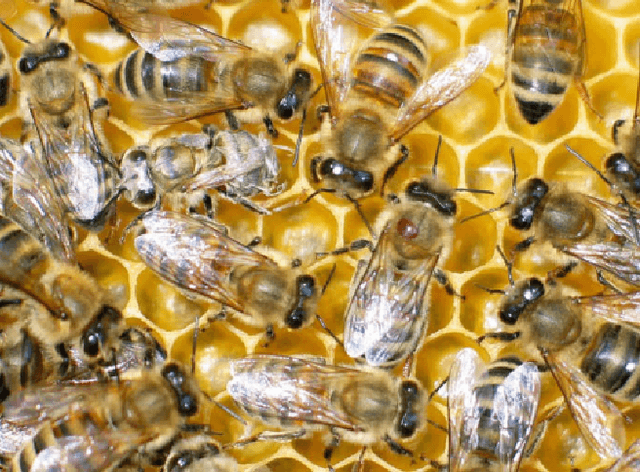
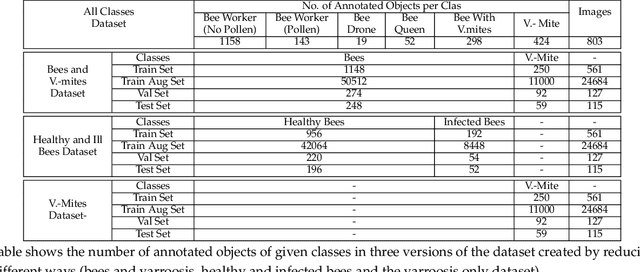
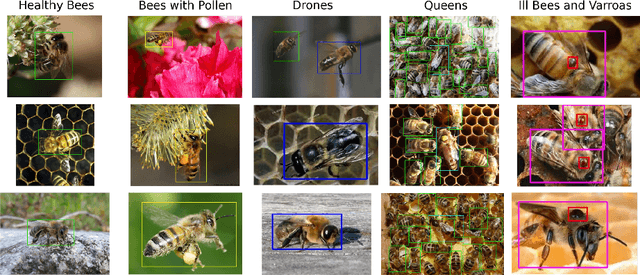
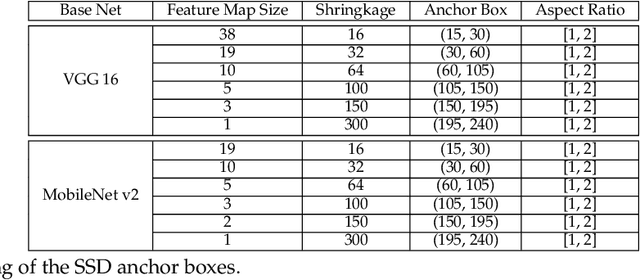
Abstract:The Varroa destructor mite is one of the most dangerous Honey Bee (Apis mellifera) parasites worldwide and the bee colonies have to be regularly monitored in order to control its spread. Here we present an object detector based method for health state monitoring of bee colonies. This method has the potential for online measurement and processing. In our experiment, we compare the YOLO and SSD object detectors along with the Deep SVDD anomaly detector. Based on the custom dataset with 600 ground-truth images of healthy and infected bees in various scenes, the detectors reached a high F1 score up to 0.874 in the infected bee detection and up to 0.727 in the detection of the Varroa Destructor mite itself. The results demonstrate the potential of this approach, which will be later used in the real-time computer vision based honey bee inspection system. To the best of our knowledge, this study is the first one using object detectors for this purpose. We expect that performance of those object detectors will enable us to inspect the health status of the honey bee colonies.
 Add to Chrome
Add to Chrome Add to Firefox
Add to Firefox Add to Edge
Add to Edge